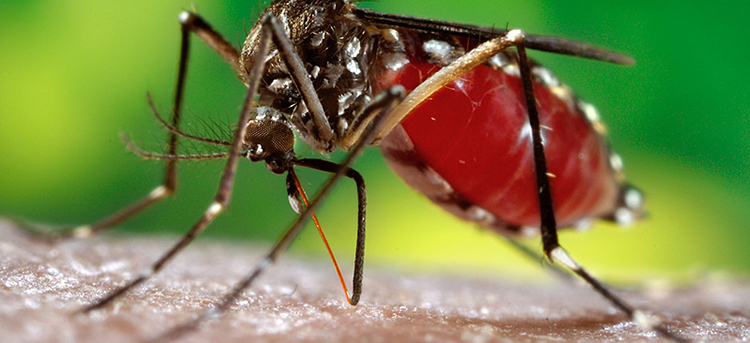Posted on October 24th, 2016

Chikungunya Fever can be treated very efficiently with natural Homeopathic medicines. The aim of the Homeopathic mode of treatmentis to provide complete symptomatic relief to the patients. The Homeopathic medicines for treating Chikungunya Fever are selected based upon the unique individual symptoms. These unique symptoms include presence or absence of thirst, the desire to cover or uncover oneself in fever, the worsening or relieving of symptoms in joint pains and any peculiar desire to eat or drink, restlessness or the need to lie down.
Chikungunya Symptoms:
- Fever which can reach 39°C, (102.2 °F)
- A petechial or maculopapular rash usually involving the limbs and trunk
- Arthralgia (bodyache) or arthritis affecting multiple joints which can be debilitating. The joint pains can be severe and even crippling.
There can also be headache, conjunctival infection and slight photophobia. Fevertypically lasts for two days and abruptly comes down, however joint pain, intenseheadache, insomnia and an extreme degree of prostration lasts for a variable period, usually for about 5 to 7 days.
- Fever: The fever is Usually 102 to 105 °F (39 to 40.5 °C) and typically lasts from three days up to one week.The fever can be biphasic (where it disappears for a few days followed by a few days of a low grade fever (101–102 °F or 38–39 °C). During this time, the virus accumulates in your bloodstream, spreading to different parts of the body.
- Arthritis (joint pain): You'll usually notice arthritis in the small joints of the hand, wrist, ankles, and larger joints, like knees and shoulders, but not the hips. Up to 70% of people have pain that spreads from one joint to the next after the previous joint starts feeling better. The pain is usually worse in the morning, but improves with mild exercise. Your joints may also look swollen or feel tender to the touch and you may have inflammation of tendons (tenosynovitis).Joint pain usually resolves within one to three weeks, with severe pain improving after the first week. However, in some cases joint pain can continue for up to a year.
- Rash: Approximately 40% to 50% of patients experience a rash. The most common type is a morbilliform eruption (maculopapular). These are red rashes with small bumps overlying them that appear three to five days after start of fever and subside within three to four days. The rash usually starts on the upper limbs followed by the face and trunk/torso.Look in the mirror with your shirt off and note any red bumpy areas over a wide area and whether they itch. Make sure to turn around to look at your back side, back of neck, and raise your arms to examine your underarms.
Dermatological manifestations observed in a recent outbreak of Chikungunya fever in Southern India includes the following:
- Maculopapular rash
- Nasal blotchy erythema
- Freckle-like pigmentation over centro-facial area
- Flagellate pigmentation on face and extremities
- Lichenoid eruption and hyperpigmentation in photodistributed areas
- Multiple aphthous-like ulcers over scrotum, crural areas and axilla.
- Lympoedema in acral distribution (bilateral /unilateral)
- Multiple ecchymotic spots (Children)
- Vesiculobullous lesions (infants)
- Subungual hemorrhage
Chikungunya – HOW DIAGNOSIS IS DONE:
- Detection of antigens or antibody to the agent in the blood (serology)
- ELISA is available
- An IgM capture ELISA is necessary to distinguish the disease from dengue fever.